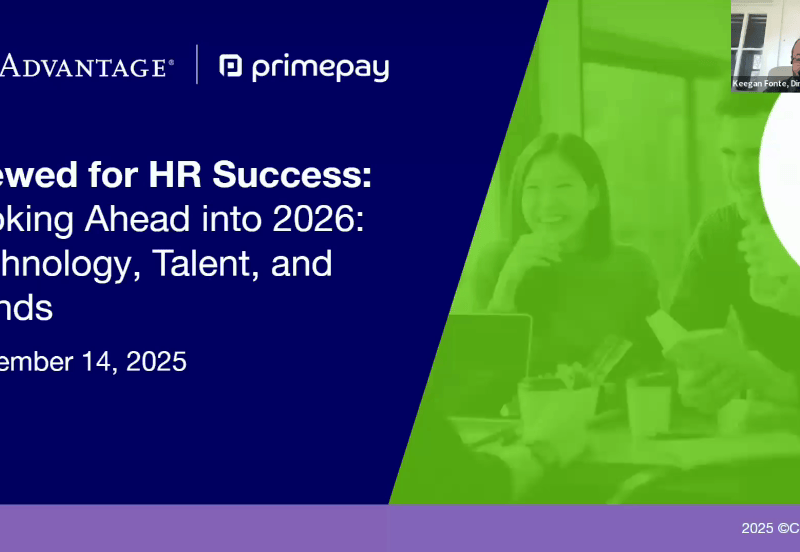In the past, businesses tended to ignore HR metrics because they were either “too complicated” or perceived as offering little value to meet company goals.
Luckily, times have changed, and many HR leaders have a seat at the strategic table. The result? HR teams are influencing ideas and driving sustainable change, like boosting retention efforts, enabling cost savings, and developing people strategies. This all aligns as well with the management of HR compliance to ensure your business has all the HR processes aligned.
But as all good leaders know, the best decisions are data-driven, not gut reactions. People metrics have therefore become vital for evaluating and evolving business processes.
To help you drive HR strategy with concise data, our industry experts have developed the following list of the top five people analytics and concrete advice on translating each metric’s results into actions that will help you positively impact the company’s bottom line.
Human Resource Metrics to Track
Maybe you’re on a newly established HR team and are just starting your data-collection efforts. Or perhaps you’re part of a seasoned team with mature data practices and simply want to check if you’re tracking the right metrics.
No matter where you are in your people metrics journey, the following equations and tips will help solidify your HR strategy and increase business performance.
1. Cost-Per-Hire (CPH)
Cost-per-hire is a recruitment metric that calculates the total expenses incurred in hiring a new employee, including advertising, recruitment agency fees, travel expenses, and internal recruiting time. It provides insight into the efficiency and cost-effectiveness of your company’s hiring process.
Why Cost-Per-Hire Matters
According to the Society for Human Resource Management (SHRM), the average cost-per-hire is roughly $4,700.
While costs depend on your recruiting efforts, it’s important to consider this average number as you analyze your own recruiting investments. Is your spending way off base? Are your current efforts working? Take note to discover trends by department, level, and position.
How to Calculate Cost-Per-Hire

How to Improve Cost-Per-Hire
To keep costs down but maintain a solid recruiting strategy, you can:
- Utilize employee referrals: Encourage current employees to refer candidates, which can reduce advertising and agency fees while often leading to higher-quality hires.
- Optimize job postings: Focus on cost-effective job boards and social media channels for advertising job openings, maximizing reach without incurring high costs.
- Invest in an Applicant Tracking System (ATS): Implementing an ATS can streamline recruitment, reduce administrative costs, and improve candidate management efficiency.
- Enhance employer branding: Strengthen your employer brand to attract candidates organically, reducing the need for extensive advertising and recruitment agency involvement.
2. Time-To-Hire
Time-per-hire is an HR metric that measures the average number of days it takes to fill an open position from the initial job posting to the candidate’s acceptance of the offer. It helps evaluate the hiring process’s efficiency and identify areas for improvement to reduce delays.
Why Time-to-Hire Matters
According to a recent Josh Bersin report, the average time it takes to hire for a position is 44 days. Of course, hiring time can vary by seniority, role, industry, and company size, but it usually makes sense to hire quickly (just remember that the more specialized the role, the longer it can take).
Using time-to-hire, recruiters can determine whether they’re spending too much time or not acquiring the right candidates.
How to Calculate Time-to-Hire

How to Improve Time-to-Hire
To help you remove problems that delay hiring, consider taking some of the steps below:
- Streamline the application process: Simplify and optimize it to reduce unnecessary steps and make it easier for candidates to apply quickly.
- Build a talent pipeline: Develop and maintain a pool of pre-qualified candidates, which will allow for faster engagement when new positions open up.
- Improve job descriptions: Write clear and concise job descriptions that accurately reflect the role and attract suitable candidates, reducing the time spent screening unqualified applicants.
3. Turnover Rate
Turnover rate is a people metric that calculates the percentage of employees who leave your organization within a specific period, typically a year.
Why Turnover Rate Matters
Regulating turnover is a key way that HR departments can affect the bottom line. When you consistently track and analyze your turnover rate, you’re better able to assess employee retention and can indicate potential issues in workplace satisfaction, culture, or management practices.
How to Calculate Turnover Rate

How to Improve Turnover Rate
To reduce voluntary turnover, make sure you:
- Use exit interviews to improve your employee experience. Only 54% of organizations conduct exit interviews, which is a missed opportunity to enhance your employee experience. Glean insights from departing employees to determine wins and areas of improvement to help retain remaining talent.
- Offer competitive and equitable compensation and benefits: Ensure that salaries, benefits, and incentives are competitive within the industry to attract and retain top talent.
- Provide career advancement opportunities: Create clear pathways for career progression and offer training and development programs to help employees grow within the company.
- Improve work-life balance: Implement policies that support a healthy work-life balance, such as flexible working hours, remote work options, and sufficient paid time off.
4. Turnover Cost
Turnover cost is the total expenses associated with an employee leaving your organization and being replaced. This includes direct costs such as recruitment, training, and onboarding of new hires, as well as indirect costs like lost productivity, decreased morale, and the time managers and HR spend in the hiring process.
Why Turnover Cost Matters
Turnover rate and turnover cost go hand-in-hand, so you’ll want to keep both in check. These HR metrics matter, as turnover also affects other non-monetary costs, such as decreasing employee engagement, lowered employee morale, and increased work gossip.
How to Calculate Turnover Cost

Vacancies can include costs such as coworker burden, added shifts (overtime), temp agency, and job advertisement.
How to Improve Turnover Cost
Below are suggestions to increase employee retention and create a stronger workplace environment:
- Invest in employee retention programs: To reduce the likelihood of turnover, implement initiatives focused on employee satisfaction, such as mentorship programs, career development opportunities, and regular feedback sessions.
- Enhance onboarding processes: Improve onboarding programs to ensure new hires are well-integrated and quickly productive, reducing the costs associated with learning curves and early turnover.
- Foster a positive work environment: Create a supportive and inclusive workplace culture that promotes employee well-being and job satisfaction, helping to reduce turnover rates and associated costs.
5. Absence Rate
The absenteeism rate is an HR metric measuring the percentage of working time lost due to employee absences within a specific period.
Why Absence Rate Matters
Employee absence is a significant problem for many organizations. Tracking this data provides insights into the frequency and impact of absenteeism on your organization’s productivity and can indicate potential issues related to employee health, satisfaction, or workplace environment.
How to Calculate Absence Rate

How to Improve Absence Rate
If absenteeism is a problem for your organization, you should:
- Enhance managerial support and communication: Train managers to effectively support their teams, communicate expectations clearly, and provide regular feedback and recognition to foster a positive work environment that reduces absenteeism.
- Offer Paid Time Off (PTO) and sick leave: Provide sufficient and flexible policies that allow employees to take time off when needed, reducing the likelihood of unscheduled absences.
- Create attendance incentives: To motivate consistent attendance, implement attendance recognition programs or incentives such as bonuses, rewards, or extra time off for employees with excellent attendance records.
- Monitor and manage absence trends: Use data analytics to monitor absence patterns and identify trends. Address chronic absenteeism issues through targeted interventions, such as return-to-work interviews or proactive management of health-related concerns.
HR Leaders = Strategic Leaders
To be seen as a strategic leader, HR consultant Barry Marshall advises HR teams to “be commercially minded.” That means looking at – and understanding – business metrics and performance to determine what you can control and how you can contribute to the bigger picture. By keeping the above HR metrics in mind, you’ll be well on your way to analyzing and acting on the right data to hit your HR goals.
Enhance Your Employee Experience
Interested in learning how your employee experience strategies and retention efforts compare to other organizations? Read our research report, State of the Employee Experience 2024, to see what’s working, what isn’t, and how your organization measures up.











